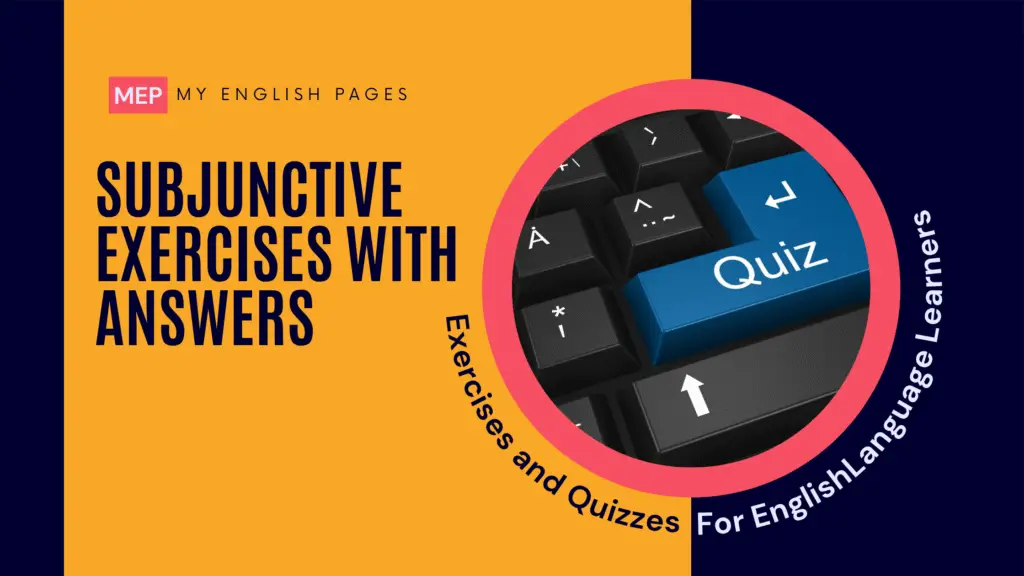Table of Contents
The subjunctive mood in English is used to express wishes, hypothetical situations, demands, or suggestions. While it’s not as commonly used as in some other languages, mastering it can help you sound more fluent and formal in English.
This post offers a quick explanation followed by 10 subjunctive exercises to test and improve your understanding.
Subjunctive Exercises

Here is a multiple-choice subjunctive mood exercise:
Quick Recap: When Do We Use the Subjunctive in English?

We typically use the subjunctive mood in the following situations:
We typically use the subjunctive mood in the following situations:
1. Wishes and Hypothetical Situations
Used to talk about unreal, imagined, or contrary-to-fact situations in the present or future.
Common verbs and expressions: wish, if only, it’s time, I’d rather, as if, as though, etc.
Form: Use the simple past (often called the unreal past) to describe present or future situations. Use “were” instead of was for all subjects.
✅ I wish I were taller.
✅ If she were here, she would help.
✅ It’s time we left.
✅ He acts as if he knew everything.
✅ I’d rather you did your homework now.
🔍 Note: This past tense does not refer to the past in time—it expresses an unreal or imagined situation in the present or future.
2. Formal Suggestions, Demands, or Recommendations
Often follows verbs like suggest, recommend, insist, demand, or adjectives like essential, important, necessary, etc.
Form: Use the base form of the verb (infinitive without “to”) after that.
✅ The teacher suggested that he study harder.
✅ I demand that she be present.
✅ It’s essential that everyone arrive on time.
More about the subjunctive!



